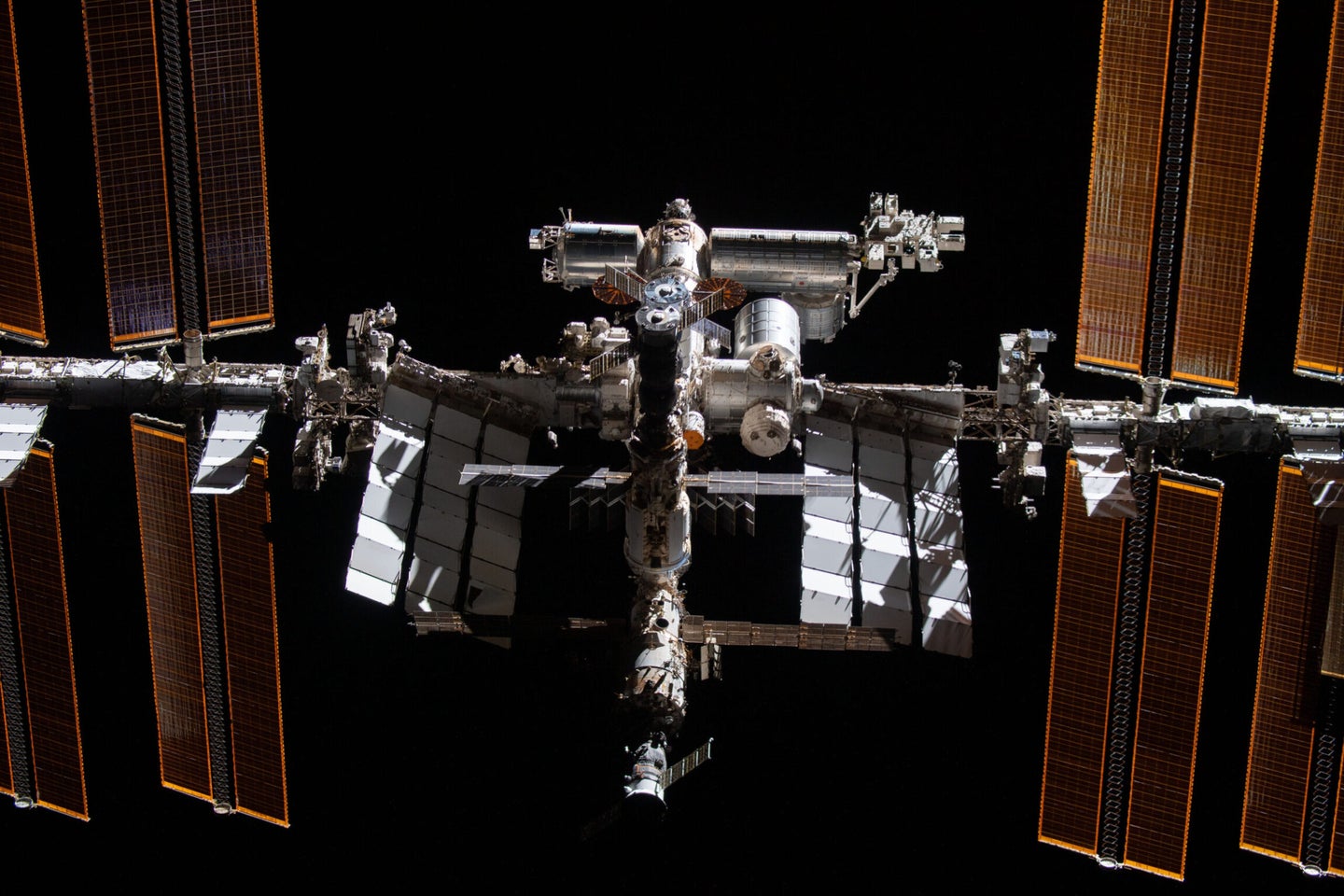Need more air in space? Magnets could yank it out of water.
Water is magnetic—a property that could help astronauts breathe a little easier.

Humans tend to take a lot for granted, even something as simple as a breath of fresh air. It’s easy to forget how much our bodies depend on oxygen—until it becomes an invaluable resource, such as aboard the International Space Station.
Although astronauts are typically sent to space with stores of necessary supplies, it’d be too costly to keep sending tanks of breathable air up to the station. Instead the oxygen that astronauts rely on for primary life support is created through a process called electrolysis, wherein electricity is used to split water into hydrogen gas and oxygen gas. On Earth, a similar process happens naturally through photosynthesis, when plants use hydrogen to make sugars for food and release oxygen into the atmosphere.
Yet because the system on the ISS requires massive amounts of energy and upkeep, scientists have been looking for alternative ways to sustainably create air in space. One such solution was recently published in NPJ Microgravity, in which researchers found a way to pull gases from liquids using magnets.
“Not a lot of people [are] aware that water and other liquids are also magnetic to some extent,” says Álvaro Romero-Calvo, currently an assistant professor at the Guggenheim School of Aerospace Engineering at Georgia Tech and lead author of the study.
“The physical principle is pretty well known in the physics community [but] the application in space is barely explored at this point,” he says. “When a space engineer is designing a space system involving fluids, they do not even consider the possibility of using magnets to induce phase separation.”
[Related: Lunar soil could help us make oxygen in space]
At the Center for Applied Space Technology and Microgravity (ZARM) at the University of Brennan in Germany, Romero-Calvo’s team was able to study the phenomenon of “magnetically-induced buoyancy.” The idea is easier to explain by visualizing a can of soda: On Earth, because the liquid is denser than carbon dioxide molecules, soda bubbles separate and float to the top of the drink when subjected to the planet’s gravity. In space, where microgravity creates a continuous freefall and removes the effect of buoyancy, the substances inside become harder to separate and these bubbles are simply left suspended in air.
To test whether magnets could make a difference, the team took their research to ZARM’s drop tower, where an experiment, once placed in an airtight drop capsule, can achieve weightlessness for a few seconds. By injecting air bubbles into syringes filled with different carrier liquids, the team was able to use the power of magnetism to successfully detach gas bubbles in microgravity. This proved that the bubbles can be both attracted to and repelled by a neodymium magnet from within various substances.

Additionally, the researchers found that through the inherent magnetic properties of various aqueous solutions (like purified water and olive oil) they tested, it’s possible to direct air bubbles to different locations within the liquid. Essentially, it’d become easier to collect or send air through a vessel. Besides being used to create an abundance of oxygen for the crew, Romero-Calvo says the study’s results show that developing microgravity magnetic phase separators could lead to more reliable and lightweight space systems, like better propellant management devices or wastewater recycling technologies.
To demonstrate the magnets’ potential use for research purposes, the team also experimented with Lysogeny Broth, a medium used in to grow bacteria for ISS experiments. As it turns out, both the broth and the olive oil were “significantly affected” by the magnetic force expended on it. “Every bit of effort that we devote to this problem is effort well spent, because it will affect many other products in space,” Romero-Calvo says.
[Related: How the ISS recycles its air and water]
If the next generation of space engineers do decide to apply magnets to future space stations, the new method could generate more efficient, breathable atmospheres to support human travel to other extraterrestrial environments, including the moon and most especially, to Mars. If we were to plan a human mission to the Red Planet, the ISS’s current oxygenation system is too complex to be completely reliable during the long journey. Simplifying it with magnets would lower overall mission costs and ensure that oxygen is abundant.
Although Romero-Calvo says their breakthrough could ultimately help us touch down on Mars, other scientists are working on ways to manufacture oxygen using plasma—a state of matter that contains free charged particles like electrons which are easily excited by powerful electric fields—for fuels, fertilizers, and other materials that could help colonize the planet. And while neither project is up to scale just yet, these emerging advances represent the amazing feats humans are capable of as we keep moving forward, striving to reach beyond our familiar horizons.
